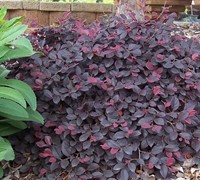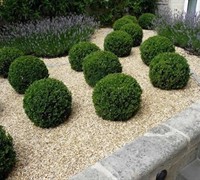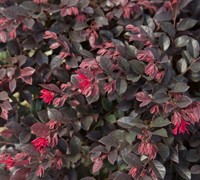Different Colored Leaves

Now that ToGoGarden is selling members of the Ebony series of Crape Myrtles (Ebony Fire and Ebony Flame), you may be wondering about plants with leaves that are not green. Many of us learn in school that the green color we typically associate with leaves comes from the pigment chlorophyll. It is this pigmented molecule that allows the plant to absorb photons of light so that it can convert the light’s energy into chemical energy which allows it to turn a molecule of carbon dioxide into organic molecules like glucose (a process called photosynthesis). Plant leaves actually have three main classes of pigments: chlorophyll, carotenoids, and anthocyanins. While chlorophyll is seen as green, the other classes of pigments can have a wider variety of colors. For example, most carotenoids are bright yellow-orange colors, and anthocyanins can typically appear red, purple, or blue. Most leaves have many, many pigments contained within them, even if you don’t visibly see all of them. For an example, consider the green leaf. The leaf appears green because of the overwhelming abundance of chlorophyll, but other pigment molecules are also present. In the autumn, when leaves “turn colors”, they are actually breaking down the chlorophyll to reclaim important chemical nutrients and you are now able to see the other pigments (yellow, red, orange) that were there all along (although some plants make extra carotenoids and anthocyanins in the fall as well). Conversely, plants with non-green leaves (such as the purple-black color of the Ebony Fire Crape Myrtle) still have chlorophyll, but the abundance of other pigments hides the green of the chlorophyll. We “see” the color of the most abundant pigment. The wide range of colors you see in plant leaves (even many different shades of green) come from the relative abundance of the different types of pigments that plants have.













